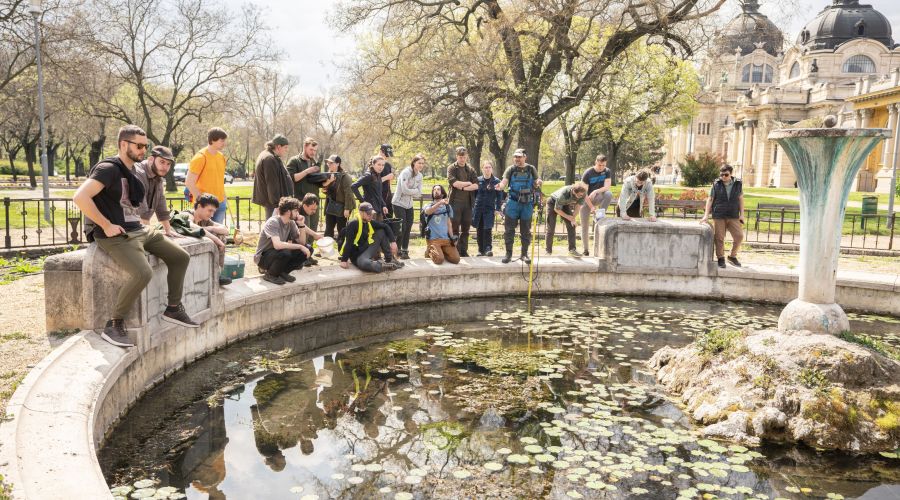Non-native species hot spot - Hungary - excursion with FFPW USB students

There are not many places with a strikingly high diversity of non-native species. Many of them can be seen in Hungary, especially in the thermal water localities.
We organized a field trip with the students to the localities that have become the object of our research in recent years, so they can get to know the exciting communities of these specific habitats. We had the opportunity to explore the outflows of Lake Hévíz, the largest thermal lake in Europe, the Városliget park in the Budapest centre, a thermal tributary of the Barát brook and Sulák brook. At these locations, students could practically try catching crayfish, fish and macrozoobenthos and thus practically see a very rich community of cichlids, a syntopic population of spiny cheek crayfish (Faxonius limosus) and red swamp crayfish (Procambarus clarkii), marbled crayfish (P. virginalis) and red cherry shrimp (Neocaridina davidi), very popular with aquarists, and many other non-native species. As a reward after a long day of (cray)fishing, the students enjoyed caught and cooked crayfish.
In contrast to these habitats saturated with non-native species, we visited the Kis-Balaton natural wetlands, built to improve the quality of the inflow water to Lake Balaton, and Lake Velence, which, in addition to its specific water characteristics and floating reed islands, stands out for its vast diversity of water and wetland birds. During the field trip, we were accompanied by our Hungarian colleagues András Weiperth and Árpád Ferincz, thanks to whom we could spot most of the native and non-native fish species found here using electrofishing, e.g., Amur Bitterling (Rhodeus sericeus), loach (Cobitis elongatoides). We did not find European Mud-minnow (Umbra krameri), which becomes rarer nowadays due to non-native gobiid species (Neogobius melanostomus, N. fluviatilis) and Chinese sleeper (Percottus glenii). Despite the massive density of non-native species, it was possible to catch the native species of water turtle - the European pond turtle (Emys orbicularis).
We ended the excursion visiting the biological station on the shore of Lake Neusidler in the town of Illmitz (Austria), where Gilbert Hafner gave us an engaging presentation of the history of the Lake and, on a short walk around the biological station showed the local phenomenon of salt marshes, once again hosting a high diversity of wetland and water birds, as well as specific invertebrate fauna.
Do you want to have similar experiences? Sign up for studies at the FFPW USB today.
Photo: Jan Škrabánek and Martin Bláha
The faculty employees attended: Antonín Kouba, Martin Bláha, Lenka Kajgrová



